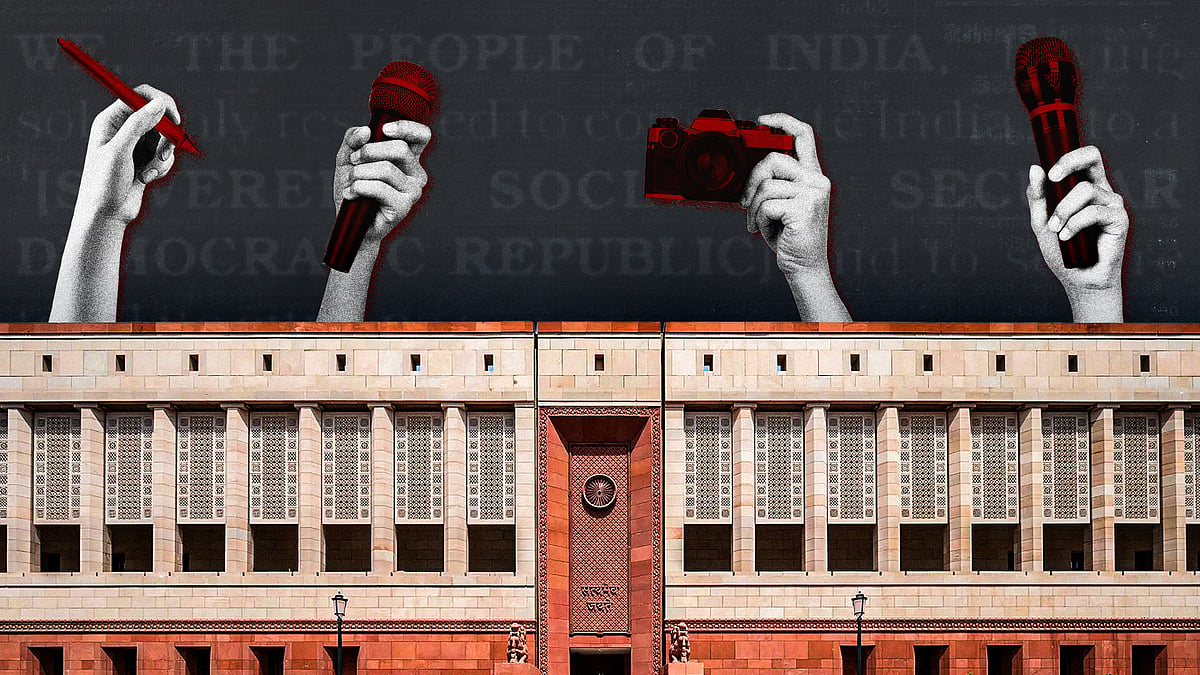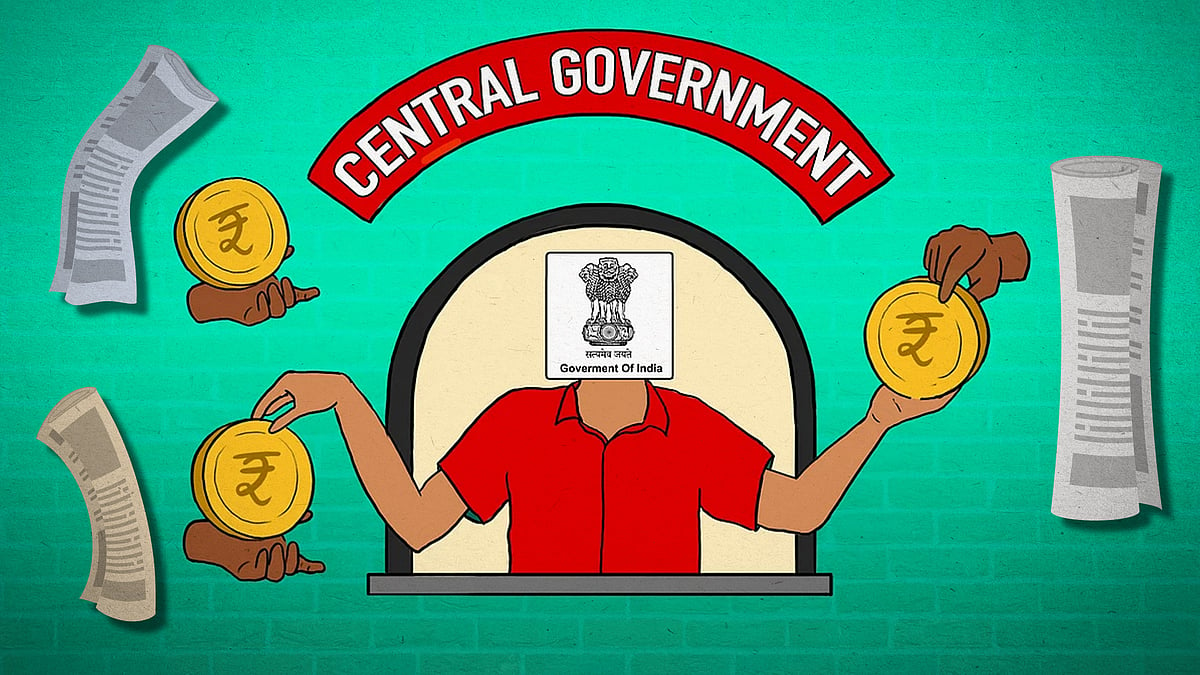Public money skewing the news ecosystem? Delhi’s English dailies bag lion’s share of govt print ads
And now this is going to surge. Considering that the government has increased print advertising rates by 26 percent.
In India’s media economy, few forces distort the news landscape as powerfully as government advertising. And the Narendra Modi government’s own data shows just how sharply public money is concentrated in a handful of Delhi newspapers.
The capital ranks fifth among states and Union territories by number of registered publishers — behind Uttar Pradesh, Uttarakhand and Madhya Pradesh — yet papers based in Delhi received a higher amount in 2023-24. Delhi publications got Rs 40.65 crore, higher than Rs 22.02 crore for UP, Rs 2.63 crore for Uttarakhand, Rs 11.25 crore for Madhya Pradesh dailies. Maharashtra, sixth on the list by number of publishers and home to a large media market, received Rs 33.02 crore, the highest after Delhi.
Although an average newspaper in Delhi would have received about Rs 34.45 lakh from the Centre in 2023–24, the actual distribution is deeply uneven: two English dailies in the capital cornered the largest chunk, over Rs 18 crore.
Notably, when the Modi government recently announced a 26 percent hike for print ads, it justified the increase as “essential revenue support” to print media, which would help sustain operations, maintain “quality journalism”, and support local news initiatives. However, the new rates are likely to deepen the skew.
Newslaundry had earlier explained how public money is poured into the news ecosystem, how this affects the media, and why these numbers matter for journalism and democracy.
Since the government has not released any public data on ad expenditure after 2024, these numbers are from the last complete dataset available on the DAVP website – DAVP being the agency traditionally responsible for government advertising. Since 2017, DAVP, the Directorate of Field Publicity, and the Song and Drama Division have been merged into the Central Bureau of Communication (CBC), now the government’s main publicity arm with 23 regional and 148 field offices.
What the numbers show is stark.
Skewed distribution
In 2023–24, the Narendra Modi government spent Rs 40.65 crore on advertisements in 118 newspapers and magazines published from Delhi. That adds up to 9,248 ads – roughly 25 government ads every single day – filling 3.23 lakh square centimetres of newsprint.
Hindustan Times alone took in more than Rs 10.13 crore in a single year from its Delhi edition. Times of India followed with Rs 8.62 crore, while the Hindi daily Dainik Jagran received Rs 4.82 crore, Navbharat Times about Rs 3.85 crore, and Punjab Kesari close to Rs 3.12 crore. Other major papers include Dainik Hindustan with Rs 2.35 crore, Amar Ujala with Rs 1.99 crore, The Indian Express with Rs 1.14 crore, and Navodaya Times with Rs 65 lakh.
If we look only at the top 10 recipients, six of them are Hindi newspapers. Yet these six papers together received about Rs 15.9 crore – still less than what just two English newspapers, Hindustan Times and Times of India, made between them: Rs 18.75 crore, or 46 percent of the total Delhi spend.
The skew is not limited to money. It shows up in volume too. Hindustan Times printed 1,386 government ads during the year, Times of India 1,299, Dainik Jagran 932, and Navbharat Times 814. On average, each government ad in Delhi cost the exchequer Rs 43,956.
Rates also explain the disparity. According to the CBC, the Delhi edition of Hindustan Times commands the highest advertising rate in the entire country – Rs 309.09 per square centimetre. The Kolkata edition of Anandabazar Patrika follows at Rs 278.90. Times of India’s Delhi edition is priced at Rs 263.13 per sq cm, while Dainik Jagran receives Rs 162.51. Several smaller papers, including Business Standard (Gujarat edition), are listed at just Rs 8.74 per sq cm. The government’s ad policy, then, is shaped not only by language but also by pricing, legacy value, and perceived reach.
One outlier in this entire dataset is the government’s own publication: Employment News. This weekly recruitment paper received ads worth Rs 2.36 crore for 1,347 ads – almost as many as Hindustan Times, though at a much lower rate.
Now consider what the 26 percent rate hike means. If the government continues spending at the same volume as 2023–24, Delhi’s print ad bill alone will rise by another Rs 10.56 crore, taking the total well past Rs 51 crore.
This is consistent with a broader trend: ad spending climbs even when the number of publications receiving ads falls. In 2021–22, the Centre spent Rs 23.21 crore on 474 newspapers and magazines in Delhi. In 2022–23, it spent Rs 31 crore on 159 publications. By 2023–24, the spending shot up to Rs 40.65 crore for just 118 publications – the year right before the Lok Sabha elections.
Zooming out to national spending gives an even clearer picture. In 2021–22, the Centre spent Rs 122 crore on print ads across India. In 2023–24, that figure jumped to Rs 259.33 crore – more than double in just two years. And this is before the new 26 percent hike kicks in.
Taken together, the figures paint an unambiguous portrait: a media ecosystem structurally dependent on government advertising, with crores flowing to a handful of big English dailies, and hundreds of smaller publications surviving on crumbs. In such a system, can the press truly serve the public interest, or must it serve the government’s?
That’s exactly the question Newslaundry was built to answer.
The government has increased ad rates by 26 percent. Newslaundry has reduced subscription prices by 26 percent. The offer lasts till the end of November. If you want journalism that doesn’t depend on the government, this is the moment to step in.
 On Constitution Day, a good time to remember what journalism can do
On Constitution Day, a good time to remember what journalism can do  In 26% boost for print ads, a reminder of who really pays for the news
In 26% boost for print ads, a reminder of who really pays for the news